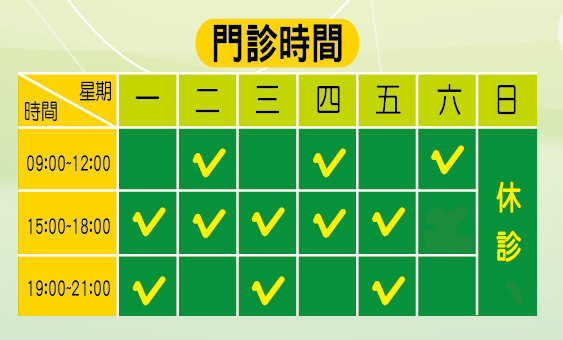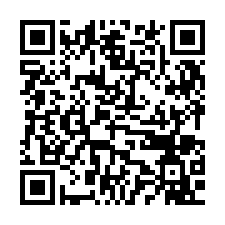葡萄糖增生注射療法(Dextrose Prolotherapy)
起源於1930年代,於1950年代,由美國醫師Dr. George S. Hackett與Gustav Anders Hemwall將此技術廣泛使用,並大力推廣。其學理是將,對身體無副作用的物質,例如高濃度葡萄糖水、自體血液等,注射到受傷的關節、韌帶、肌腱、軟骨等結締組織周圍,誘發刺激自體受傷組織的重新修復,以減緩疼痛,並促進結構強化的治療方式。國內目前常見的增生注射療法有,葡萄糖增生注射療法(Dextrose Prolotherapy)、PRP 自體高濃度血小板血漿療法等。


美國職棒MLB選手,田中將大與CC Sabathia等球星,都將增生注射療法列為首選,跳脫出傳統,以外科手術為優先的迷思。無數的職業選手,在手術重建後,面對最大的考驗在於,手術成功後,如何克服術後局部組織的破壞,包含疤痕組織生成、關節孿縮、局部腫脹、肌肉萎縮等術後副作用,順利持續復健。因此,術後自體修復能力的優劣與修復的時程,是成敗關鍵。自體修復能與修復的時程,又牽動復健計畫的介入時間點。許多職業選手,往往於術後,跨不過術後的各種副作用、受傷組織修復差、修復的時程長、復健期長,而無法順利回到職業運動場上。增生注射治療,別於傳統手術,對於運動傷害、退化性關節炎、關節韌帶肌腱軟組織傷害的修復治療,開創的新局。


葡萄糖是自然界分布最廣且最為重要的一種單糖。葡萄糖是一種多羥基醛。水溶液旋光向右,故亦稱「右旋糖」。葡萄糖在生物學領域具有重要地位,是活細胞的能量來源和新陳代謝中間產物。葡萄糖增生注射治療(Dextrose Prolotherapy)藉由多種機制啟動修復,包含葡萄糖直接的反應、滲透壓(osmotic)誘發反應與發炎生長效應(inflammatory growth effect)。葡萄糖增生注射治的濃度如果在10%以上,會造成細胞處於滲透壓梯度變化下。這樣的滲透壓變化會讓注射區域的細胞失去水分,進而開啟生長因子流入(influx)細胞與患部修復連鎖反應(wound-healing cascade)。葡萄糖水是非常理想的增生劑,原因是(一)葡糖糖是屬於水溶性、(二) 葡萄糖是人體正常血液中的化學物質,因此安全性佳,即便打在身體多個區域或是使用較大劑量,都相對安全。
葡萄糖增生注射治療會引發局部的發炎反應,發炎反應會間接刺激組織中生長因子的釋出,生長因子是受傷組織修復與強化過程中,最重要的關鍵之一。葡萄糖增生注射治的最終結果,可使新生的膠原蛋白(collagen)積累在受傷韌帶與肌腱上。人體正常的細胞中,葡萄糖含量僅有0.1%。增加葡萄糖的濃度可以促進細胞蛋白質的合成、DNA的合成、細胞體積(cell volume)的增加與細胞增生 (cell proliferation)。正常人類細胞處於0.5%的葡萄糖濃度環境下,便會誘發細胞增生,並刺激多種生長因子的產,例如血小板生長因子(platelet-derived growth factor)、轉化生長因子β (transforming growth factor-beta, TGF-β)、表皮細胞生長因子(epidermal growth factor, EGF), 鹼性纖維母細胞生長因子(basic fibroblast growth factor, bFGF), 類胰島素生長因子(insulin-like growth factor, IGF-1), 結締組織生長因子(connective tissue growth factor, CTGF)。這些生長因子與肌腱、韌帶、軟組織的修復、健康狀態與生長有關,他們對於受傷組織的修復與強化,扮演著極重要的角色。自1956年起至今,許多研究指出,葡萄糖注射到動物與人類的組織中,會刺激韌帶增厚、肌腱肥大(tendon hypertrophy)、增加細胞外間質成分(extracellular matrix)、纖維母細胞增(fibroblastic proliferation)、修復關節軟骨缺損(articular cartilage defects)。


葡萄糖增生注射被證實,在不同的葡萄糖濃度下,可以刺激細胞組織產生發炎修復連鎖反應(inflammatory healing cascade)。當葡萄糖的滲透壓提升到50mOsm/kg,就可以誘發活化多種生長因子的產生,包含血小板生長因子PDGF (platelet-derivedgrowth factor)等各種生長因子,保護受傷的軟骨組織,且產生發炎性(inflammatory)與非發炎性(noninflammatoryru)的生化效應,協助組織修復。
2014年2月,由林家弘醫師、王偉全醫師與尤稚凱醫師等35位復健科、骨科、疼痛科等各專科領域醫師,成立「台灣增生療法醫學會」,以期能在國內大力推廣增生注射治療,為運動傷害、各式關節傷害與慢性疼痛患者,帶來更有效、副作用更低、更安全的治療選擇。

葡萄糖增生注射療法,廣泛運用在各類骨骼肌肉、關節疾病等各式相關急慢性疼痛與神經疼痛,都有相當不錯的治療效果。其最大特點是,免手術、不依賴口服與外用藥物、促進自體修復機制。
根據「台灣增生療法醫學會」理事長,台中榮總復健科主治醫師林家弘醫師指出:
「增生注射治療有別於傳統類固醇注射,在精確找到身體受傷的部位之後,局部注射天然無害成分,促進身體軟組織(包括肌腱、韌帶、肌肉纖維及關節軟骨)重新產生修復,可以治療疼痛及增強軟組織強度,屬於根治性療法,非症狀治療。是目前所知,唯一能讓韌帶和軟骨生長到接近原來強度、厚度的可靠方法。」
疼痛和麻的原因
90%的慢性疼痛、麻,都是韌帶、肌腱受傷沒有完全恢復所造成的,受傷的因素有可能是反覆性的使用磨損,或者長期姿勢不良,不見得一定有過外傷,受傷過的韌帶或肌腱,如果沒有恢復一半的強度,每次拉扯到就會造成疼痛,更嚴重的疼痛會傳導到遠處,成為一般人所說的神經痛!事實上大部分的神經痛都是肌腱韌帶的受傷,沒有恢復,強度不足支撐人體活動造成的!電燒神經、神經阻斷、開刀移除椎間盤,吃止痛藥都沒有治療疼痛的根本原因,所以復發的機會很大!真正的神經壓迫,局部觸摸感覺是受損的,活動也非常困難,大部分人的麻,並不是真正的麻,而是一種不舒服感,多是韌帶受傷鬆弛造成。身體不管生什麼病,都要靠人體自己的免疫力來修復,止痛消炎會抑制免疫系統,造成受傷沒有恢復,成為慢性痛!」
有下列情形,建議找熟悉葡萄糖增生注射治療的醫師諮詢!
1. 長久骨關節疼痛沒有好,應當接受增生治療,若醫師建議開刀,一定要經過增生治療沒效再考慮開刀!
2. 運動及意外傷害:急性、慢性(急性傷害治療效果更快)
3. 神經痛、麻
4. 退化性關節炎、其他關節變形
葡萄糖增生注射治療適應症:
各式運動傷害、頑固性足底筋膜炎、退化性關節炎、肩膀旋轉袖口撕裂傷與發炎、鈣化性肌腱炎、網球肘、高爾夫球肘、媽媽手、手腕三角纖維軟骨損傷、板機指、尾椎痛、腕隧道症候群、顳顎關節疼痛、足跟痛、腳踝扭傷、下背疼痛、脊椎疼痛、急慢性關節扭傷、膝蓋韌帶拉傷、慢跑後膝蓋疼痛、韌帶鬆弛
One of the best choice of treatment for sport injury ━ Dextrose Prolotherapy
No surgery and less side effect. Enhancing the injuryed tissue to repair and recover rapidly by the safest method.
The first choice in treating chronic pain, joint and sofe tissue injury.
Indicaiton of Dextrose Proloherapy
sport injury, plantar fasciitis, osteoarthritis (OA), rotator cuff tendinitis, rotator cuff partial tear, calcifying tendinitis, tennis elbow, golf elbow, De Quervain's disease, triangular fibrocartilage complex (TFCC) injury, wrist sprain, trigger finger, coccydynia, carpal tunnel syndrome, temporomandibular joint disorder, heel pain, Achilles tendinitis, ankle sprain, low back pain, acute or chronic sprain, knee pain, ACL and PCL injury, runner's knee, jumper's knee, ligament laxity, pes anserine bursitis, ischiogluteal bursitis
增生療法門診時間
線上預約 https://goo.gl/zW2SkN
掛號預約專線 (02)2337-9196

增生療法為自費治療,收費方式依部位計價
頸部 2000元/次
顳顎關節 1600元/次
單側手肘 1600元/次
單側手腕/手指 1000元/次
單側肩膀 2000元/次
腰椎與下背部 2500元/次
臀部與薦椎2500元/次
單側髖關節 2500元/次
單側膝蓋 2000元/次
單側足踝 1600元/次

博昌增生療法與復健科診所關心您
台北市萬華區萬大路221號
掛號預約專線 (02)2337-9196
參考文獻
1. Banks A: A rationale for prolotherapy. J Orthop Med (UK) 13:54–59, 1991.
2. Berl T, Siriwardana G, Ao L, et al: Multiple mitogen-activated protein kinases are regulated by hyperosmolality in mouse IMCD cells. Am J Physiol 272:305–311, 1997
3. Hackett GS: Ligament and Tendon Relaxation Treated byProlotherapy, 3rd ed. Springfield, IL, Charles C Thomas, 1956.
4. Ward CW, Gough KH, Rashke M: Growth factors in surgery. Plast Reconstr Surg 97:469–476, 1996.
5. Ohgi S, Johnson P: Glucose modulates growth of gingival fibroblasts and periodontal ligament cells: Correlation with expression of basic fibroblast growth factor. J Periodontal Res 31:579–588, 1996
6. Pugliese G, Pricci F, Locuratolo N, et al: Increased activity of the insulin-like growth factor system in mesangial cells cultured in high glucose conditions: Relation to glucose-enhanced extracellular matrix production. Diabetologia 39:775–784, 1996.
7. Roos MD, Han IO, Paterson AJ, et al: Role of glucosamine synthesis in the stimulation of TGF-alpha gene transcription by glucose and EGF. Am J Physiol 270:803–811, 1996.
8. Caruccio L, Bae S, Liu A, et al: The heat-shock transcription factor HSF1 is rapidly activated by either hyper- or hypoosmotic stress in mammalian cells. Biochem J 327:341–347, 1997.
9. Krump E, Nikitas K, Grinstein S: Induction of tyrosine phosphorylation and Na+/H+ exchanger activation during shrinkage of human neutrophils. J Biol Chem 272:17303–17311, 1997.
10. Okuda Y, Adrogue H, Nakajima T, et al: Increased production of PDGF by angiotensin and high glucose in human vascular endothelium. Life Sci 59:455–461, 1996.
11. Ruis H, Schuller C: Stress signaling in yeast. Bioessays 17:959–965, 1995.
12. Szaszi K, Buday L, Kapus A: Shrinkage-induced protein tyrosine phosphorylation in Chinese hamster ovary cells. J Biol Chem 272:16670–16678, 1997.
13. Jensen K, et al. Response of knee ligaments to Prolotherapy in a rat injury model. American Journal of Sports Medicine. 2008;36:1347-1357.
14. Jensen K, et al. Early inflammatory response of knee ligaments to Prolotherapy in a rat model. Journal of Orthopedic Research. 2008;26:816-823.
15. Reeves K, et al. Evidenced-based regenerative injection (Prolotherapy) in sports medicine. In Seidenberg P, Beutler A (eds.) The Sports Medicine Resource Manual. 2008; Saunders Publishing, Philadelphia PA, Chapter 50.
16. Natarajan R, et al. Vascular smooth muscle cells exhibit increased growth in response to elevated glucose. Biochemistry and Biophysic Research and Communication. 1992;186:552-560.
17. McGinn S, et al. High glucose and endothelial cell growth: novel effects independent of autocrine TGF-beta 1 and hyperosmolality. American Journal of Phyiology and Cell Physiology. 2003;234:C1374-C1386.
18. Berl T, et al. Multiple mitogen-activated protein kinases are regulated by hyperosmolality in mouse IMCD cells. American Journal of Physiology. 1997;272:305-311.
19. Caruccio L, et al. The heat-shock transcription factor HSF1 is rapidly activated by either hyper- or hypo-osmotic stress in mammalian cells. Journal of Biochemistry. 1997;327:341-347.
20. Di Paloa S, et al. High glucose concentration induces the overexpression of transforming growth factor-beta through the activation of a platelet-derived growth factor loop in human mesangial cells. American Journal of Pathology. 1996;149:2095-2106.
21. Oh J, et al. Sequential effects of high glucose on mesangial cell transforming growth factor-beta 1 and fibronectin synthesis. Kidney International. 1998;54:1872-1878.
22. Murphy M, et al. Suppression subtractive hybridization identifies high glucose levels as a stimulus for expression of connective tissue growth factor and other genes in human mesangial cells. Journal of Biology and Chemistry. 1999;274:5830-5834.
23. Fukuda K, et al. High concentration of glucose increases mitogenic responsiveness to heparin-binding epidermal growth factor-like growth factor in rat vascular smooth muscle cells. Arteriosclerosis Thombosis and Vasculature Biology. 1997;17:1962-1968.
24. Ohgi S, et al. Glucose modulates growth of gingival fibroblasts and periodontal ligament cells: correlation with expression of basic fibroblast growth factor. Journal of Periodontal Research. 1996;31:579-588.
25. Pugliese G, et al. Increased activity of the insulin-like growth factor system in mesangial cells cultured in high glucose conditions. Relation to glucose-enhanced extracellular matrix production. Diabetologia. 1996;39:775-784.
26. Reeves K. Prolotherapy: injection of growth factors or growth factor production stimulants to growth normal cells or tissue. In Waldman SD (ed): Pain Management. Philadelphia, Elsevier, 2006; 1106-1127.
27. Martinez-Zapata M, et al. Efficacy and safety of autologous plasma rich in platelets for tissue regeneration: a systematic review. Transfusion. 2009;49:44-56.
28.Creaney L, et al. Growth factor delivery methods of sports injuries: the state of play. British Journal of Sports Medicine. 2008;42:314-320.
29. Sanchez M, et al. Platelet-rich therapies in treatment of orthopaedic sport injuries. Sports Medicine. 2009;39:345-354. Tabata Y. Tissue regeneration based on growth factor release. Tissue Engineering. 2003;9:S5-15.
30. Jensen K, et al. Early inflammatory response of knee ligaments to Prolotherapy in a rat model. Journal of Orthopaedic Research. 2008;26:816-823.
31. Jensen K, et al. Response of knee ligaments to Prolotherapy in a rat injury model. American Journal of Sports Medicine. 2008;36:1347-1357.
32. Kim H, et al. The effects of anti-inflammatory drugs on histologic findings of the experimental Prolotherapy model. Journal of the Korean Academy of Rehabilitation Medicine. 2006;30:378-384.
33. Ahn K, et al. The effect of the Prolotherapy on the injured Achilles tendon in a rat model. Journal of the Korean Academy of Rehabilitation Medicine. 2002;26:332-336.
34. Oh S, et al. Dextrose-induced subsynovial connective tissue fibrosis in the rabbit carpal tunnel: a protential model to study carpal tunnel syndrome. Hand. 2008;3:34-40.
35. Kim H, et al. Comparison of histological changes in accordance with the level of dextrose-concentration in experimental Prolotherapy model. Journal of Korean Academy of Rehabilitation Medicine. 2003;27:935-940.
36. Kim S, et al. The effects of hyperosmolar dextrose and autologous serum injection in the experimental articular defect of rabbit. Journal of the Korean Acdemy of Rehabilitation Medicine. 2006;30:173-178.
37. Park Y, et al. Intra-articular injection of a nutritive mixture solution protects articular cartilage from osteoarthritic progression induced by anterior cruciate ligament transaction in mature rabbits: a randomized controlled trial. Arthritis Research and Therapy. 2007;9:R8.
38. Lee C. Prolotherapy. The Journal of the Korean Pain Society. 2004;Dec:17S:94-98. Lee C, et al. Clinical experience of Prolotherapy for chronic musculoskeletal disease. The Journal of The Korean Pain Society. 2001;14:114-117.
39. By Ross H, et al. Evidence-Based Use of Dextrose Prolotherapy for Musculoskeletal Pain: A Scientific Literature Review. Journal of Prolotherapy. 2011;3(4):765-789.
40. http://www.journalofprolotherapy.com/pdfs/issue_12/issue_12_03_evidence_based_prolo.pdf
41. picture from http://dentistryandmedicine.blogspot.tw/2011/10/regeneration-healing-repair.htm




 留言列表
留言列表

 {{ article.title }}
{{ article.title }}